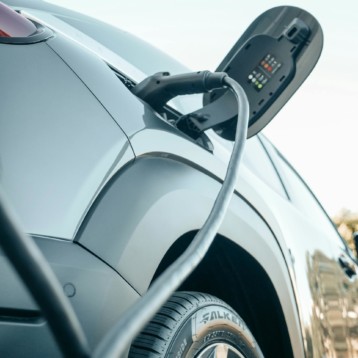Audi has announced the implementation of a new ‘super-computer’ in their development department. Thanks to unique processing abilities, Audi’s researches can now analyze car crash models faster and better, thus improving their vehicles’ safety. According to the firm, the use of computerized simulations is crucial for the development of safer cars.
Audi is using a “cluster” of computers, composed of 608 processors capable of over 29 teraflops of processing power or about 29 billion computer operations per second. The result is the fastest computer in the automotive industry, and one of 150 fastest computers in the world. The equipment, acquired on April 2008, is also highly efficient. The 320 servers of the HP ProLiant BL460c computer are mounted on eight two-meter high racks and require about 30% less space than regular crash simulation computers. The cluster’s efficient cooling system also uses 30% less energy, with impressive energy consumption of just 86 kilowatts (kW) instead of the usual 115 kW.
According to Audi, developers conduct about 5,000 simulations each week; these include various situations, such as frontal crashes and special component tests. The simulations help Audi’s researchers determine if and how to change future car designs in order to make them more secure. The main advantage of using such advanced simulations is that they enable making changes to the car prior to its construction – saving substantial R&D budget.
Audi has expanded its inventory of computers due to the high pace in which technical challenges arise. Moreover, without extensive crash simulations, vehicle development wouldn’t be possible. As the complexity of cars increases and testing regulations tighten, every manufacturer will eventually have to conduct such simulations. To demonstrate the thorough exams each model undergoes, Audi claims that a single car model is submit to about 1,000 simulations per week during its 48-month development phase. Computing each simulation can take anywhere from 30 minutes and up to a week, depending on the complexity of the accident. Therefore, when the developers finally conduct the real crash tests the cars have already achieved an extremely high standard of safety, thanks to the computer simulations.
Dr. Ulrich Widmann, Head of Vehicle Safety Development at Audi, said after the acquisition: “The new supercomputer accelerates simulation workflows several times over. With our constantly growing model range it’s essential for every model to be put through its paces during development in every conceivable accident scenario.”
TFOT has covered other developments that increase cars’ safety, such as a car system that analyzes the driver’s behavior, which signals when the driver’s level of fatigue reaches a certain point, Nissan’s development of Collision Free Cars, and a new smart vehicle communications systems that could prevent accidents and traffic jams. Another related TFOT article is one of the most realistic racing simulators in the world, created by the German Company SR-Simulationscenter for entertainment purposes.
For more information on Audi’s new supercomputer, see the company’s press release.










